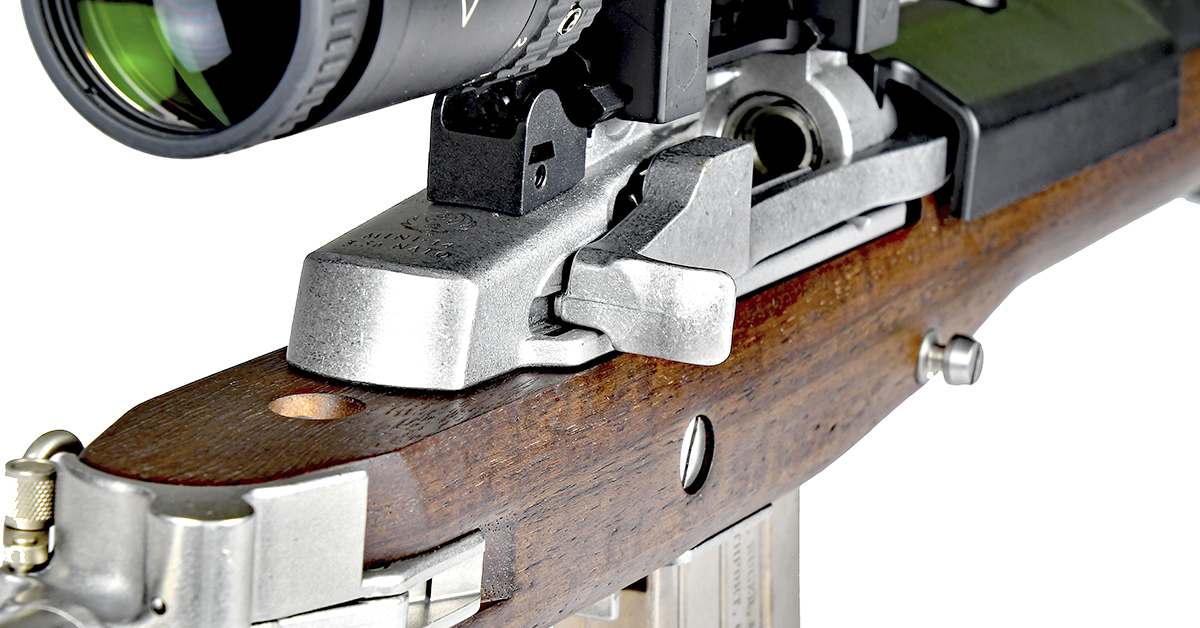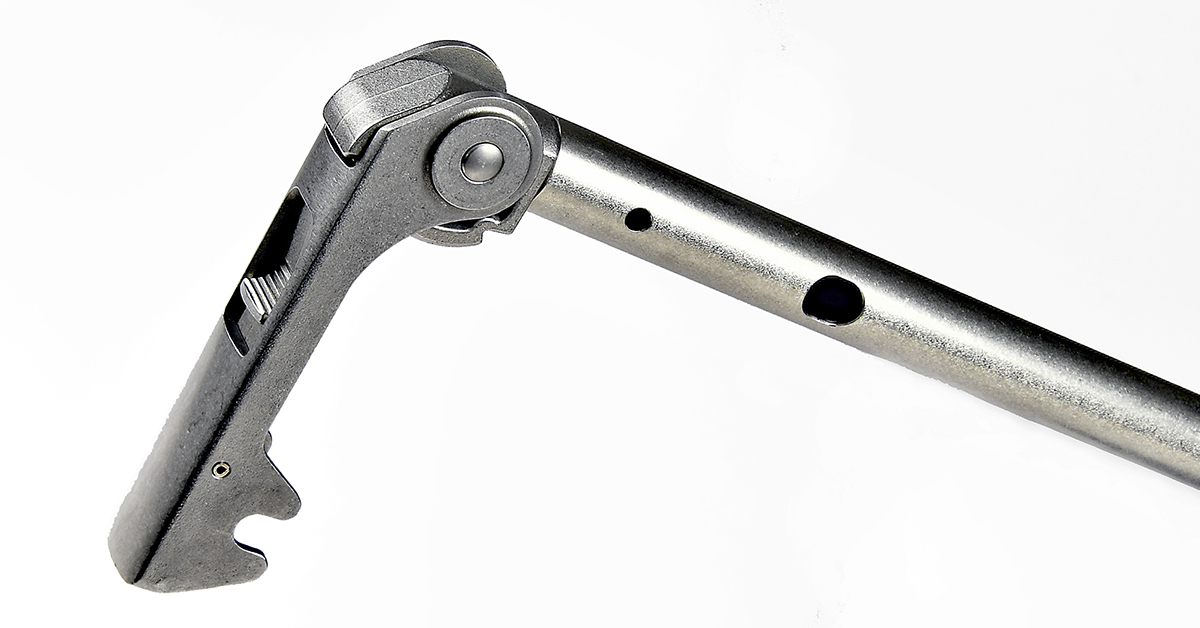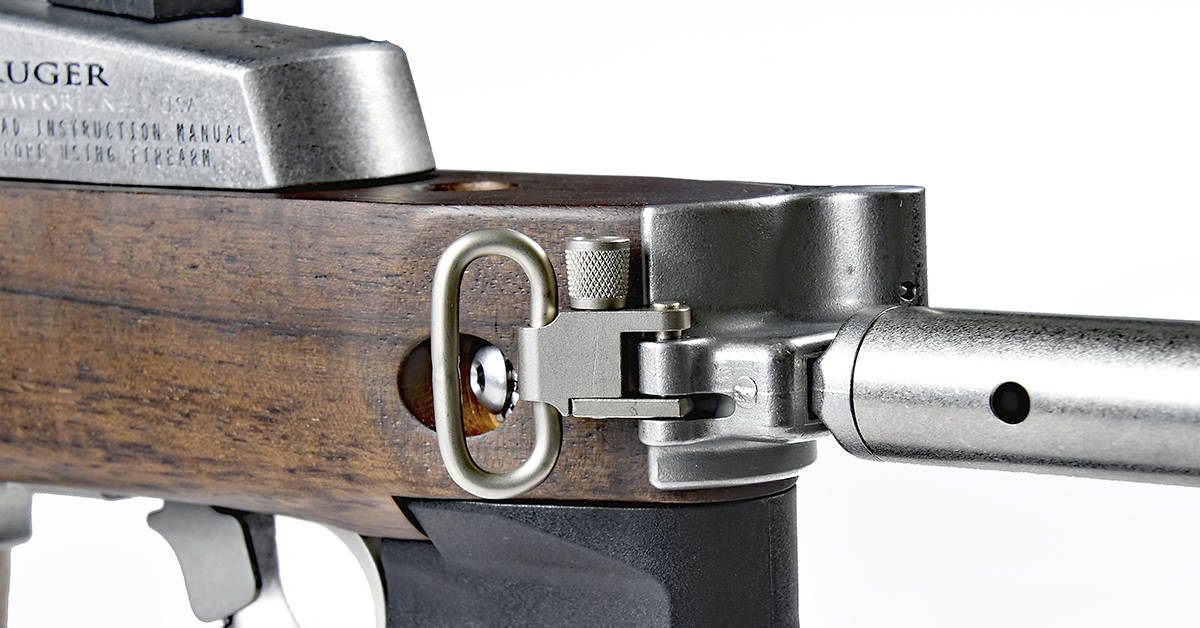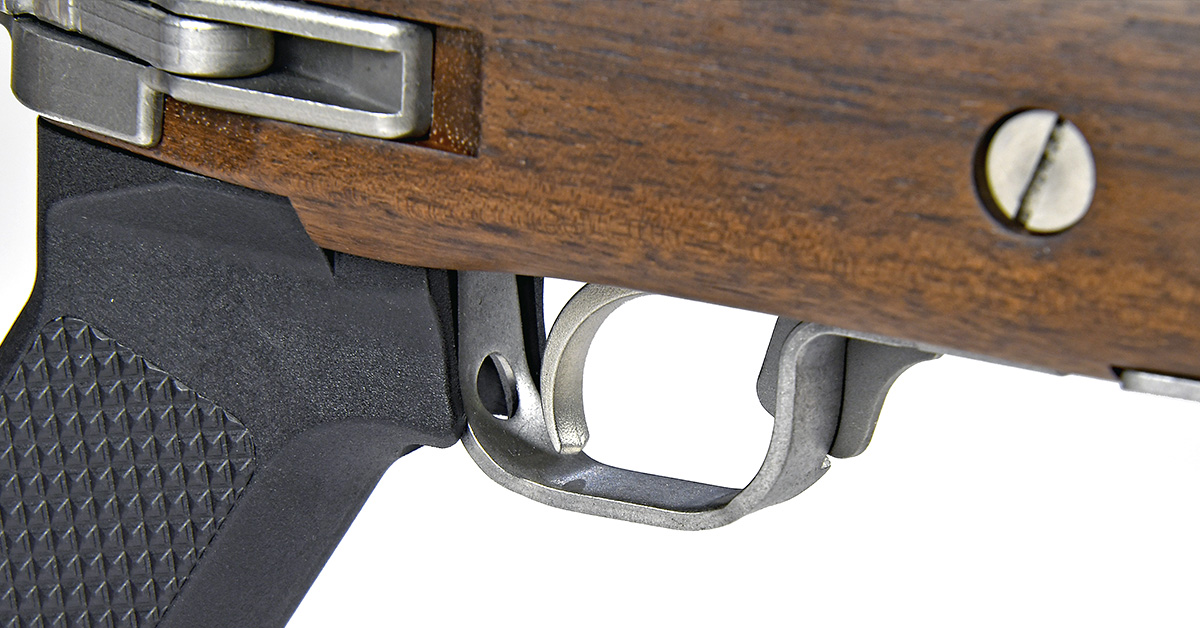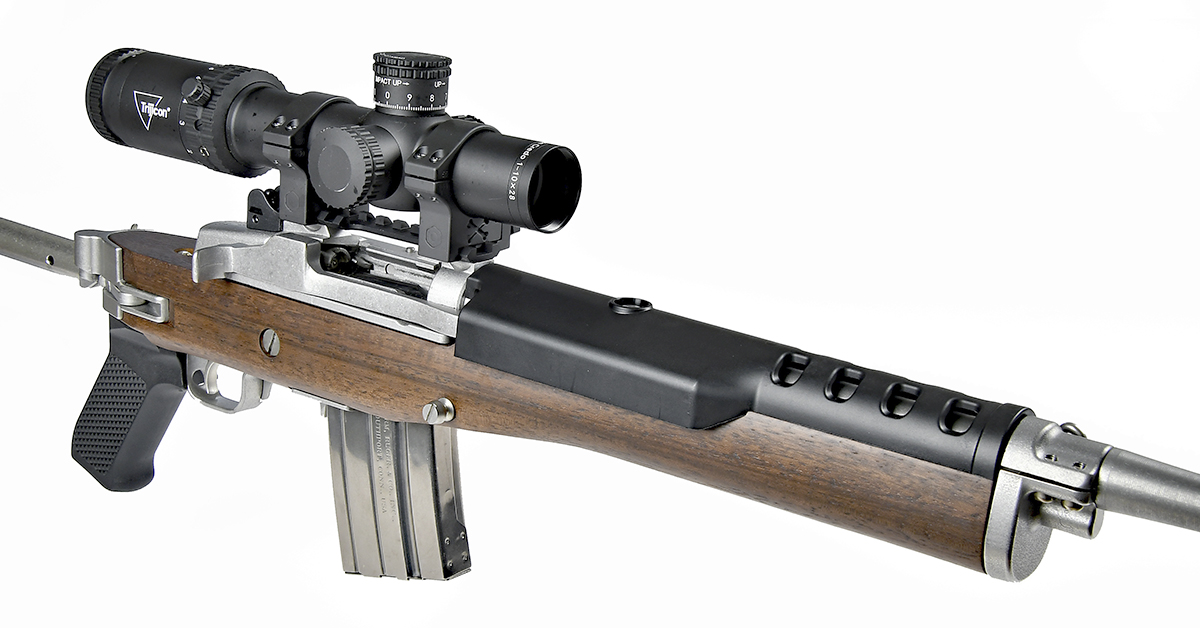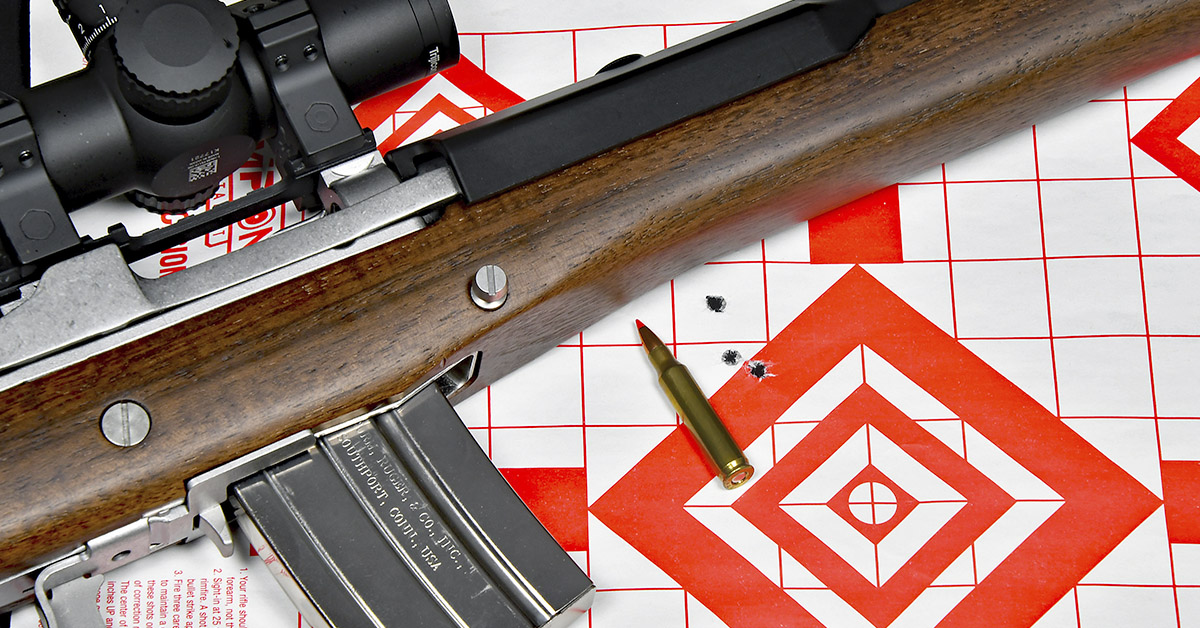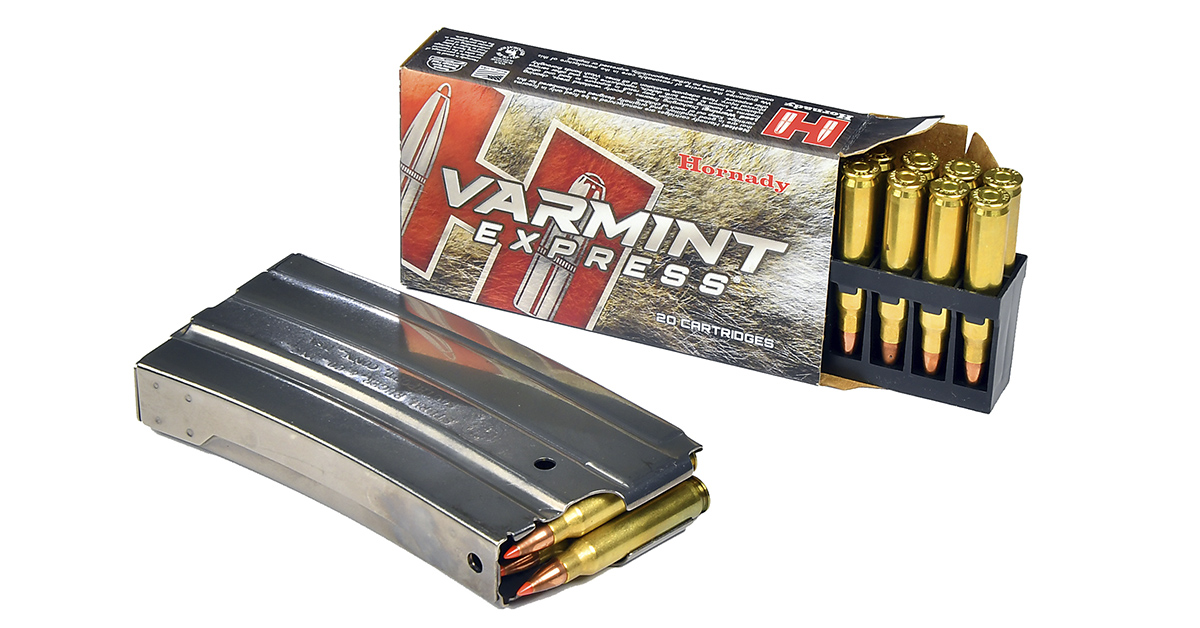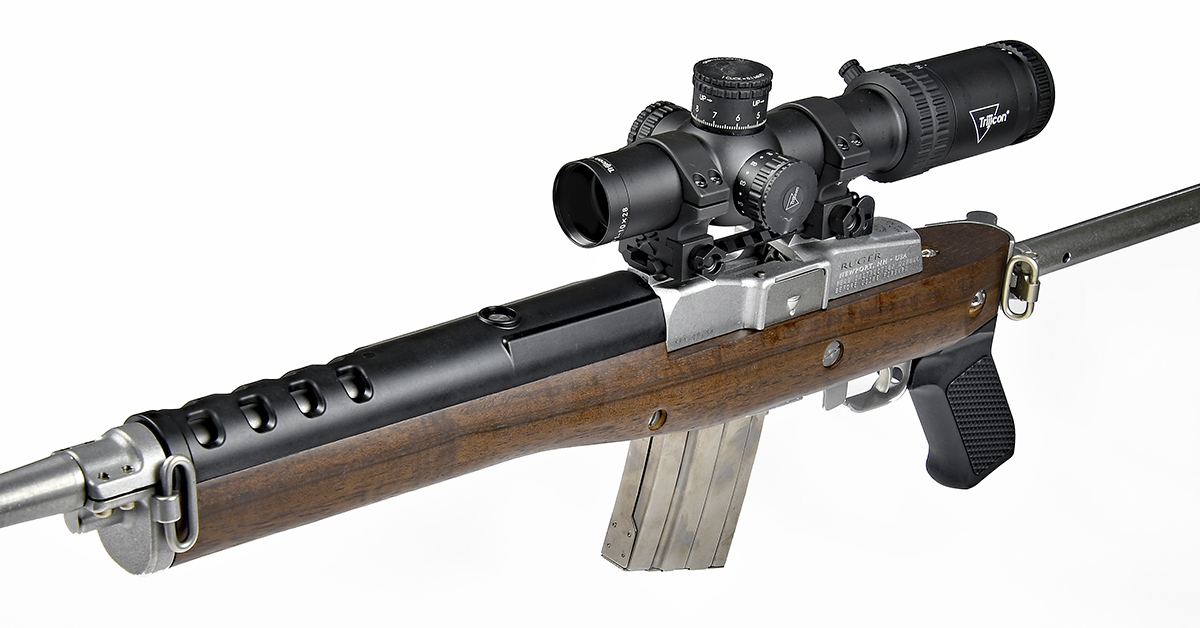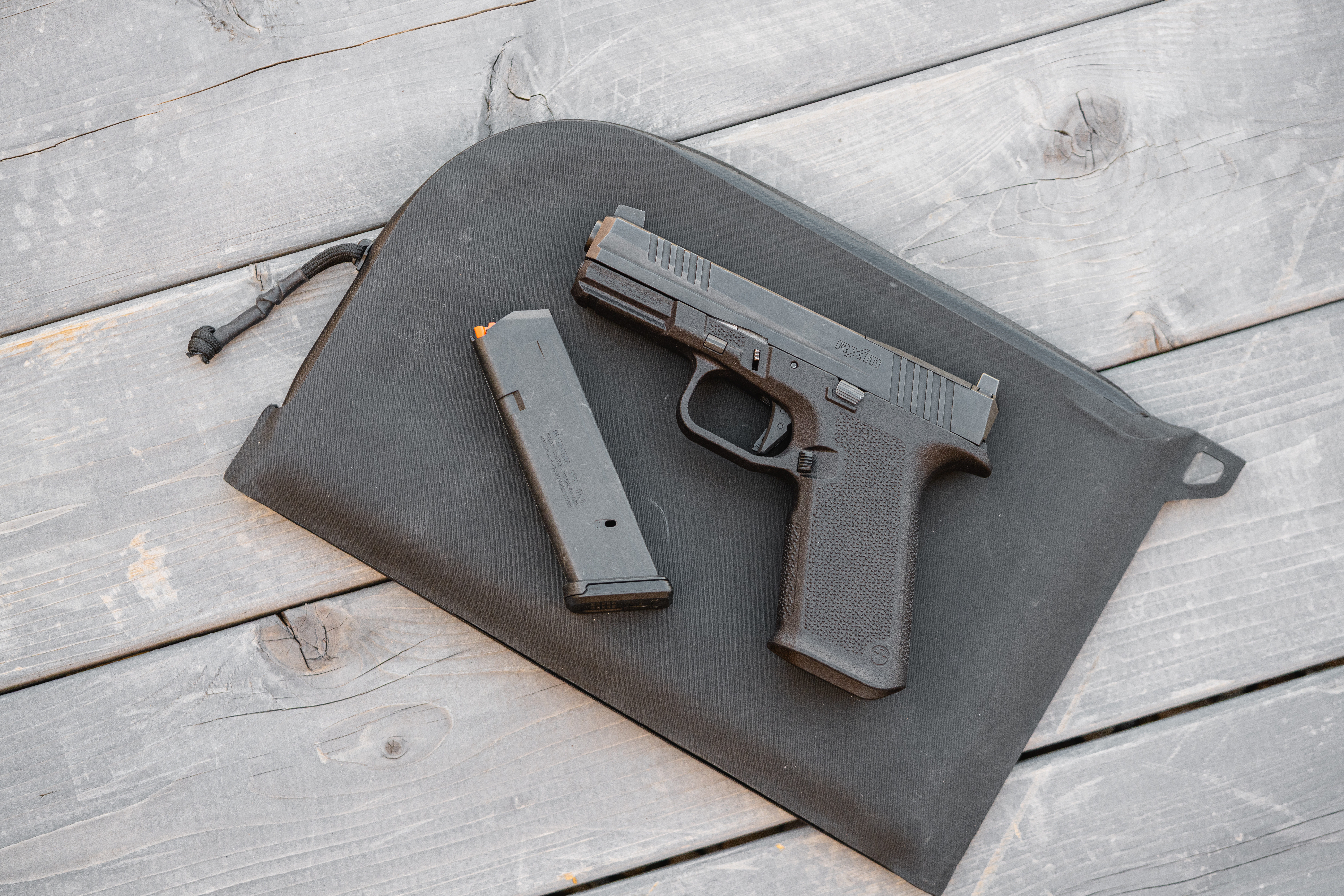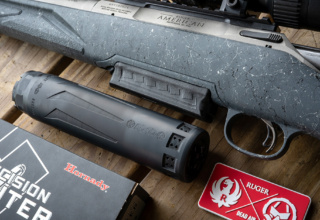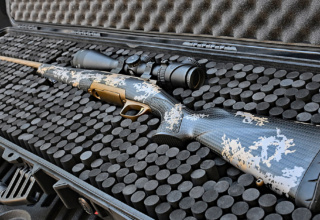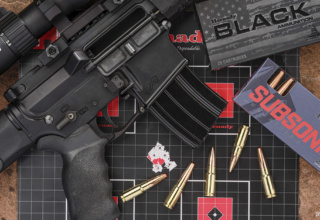Ruger has resurrected the side-folder Mini-14, a serious semi-auto rifle with old-school charm
by Mike Dickerson
By all reasoning, the Ruger Mini-14 should have gone the way of the dinosaur long ago. There’s very little it can do that an AR-15 can’t do better. The Mini-14 is less accurate than most ARs. It was once more affordable than an AR-15, but you can now buy quality ARs for far less. Mini-14 magazines are pricey, and they’re trickier to insert and remove from the magazine well. The Mini-14 is less versatile and allows for less customization than AR-15s. The Mini-14 is also — for me, at least — a bit more onerous to take down and reassemble.
Despite these shortcomings and a dated action design, the Mini-14 has soldiered on for 50 years in a variety of models marketed for civilian, law enforcement, and military use. In its early years, the Mini-14 filled a gap in the market because the AR-15 had not yet achieved widespread popularity, but the Mini-14 remains popular today for several good reasons.
First, it’s a viable option in a number of states that have banned ARs. It’s also a good choice for those who prefer a semi-auto rifle without the “evil black gun” appearance of ARs. Finally, as a gun that was birthed with the outward appearance of a scaled-down, wood-stocked M14, it has an undeniable retro-cool demeaner. That’s especially true of the new folding Tactical Mini-14, which is actually a new and improved version of older models featuring a tubular metal folding stock, such the Mini-14 GB and selective-fire AC-556.
Readers of a certain age will instantly recognize a folding Mini-14 as the gun immortalized in the cheesy 1980s hit TV show The A-Team, which featured high-volume gunfire, few casualties, and the catchphrase, “I love it when a plan comes together.”
A plan has definitely come together with Ruger’s new version of the folding-stock Mini-14. It incorporates improvements made to the gun over the years while offering a little more versatility than traditionally stocked models. The rifle is chambered for 5.56 NATO, so it can easily digest .223 Remington.
Like all Mini-14s, the new model uses a rugged, Garand-style action with a breech bolt locking system, a self-cleaning moving gas cylinder, and a fixed-piston gas system. While some may quibble over the action’s reliability compared to an AR-15, I’ve never had a single stoppage with a Mini-14, and the rifle sent to me for testing ran with monotonous reliability at the range. It fed, fired, and ejected a range of factory ammo with nary a hiccup, even though I never cleaned the gun during testing. That’s more than I can say for some ARs I’ve tested.
Mated to the matte stainless action, which contrasts nicely with the walnut stock, you’ll find an 18.5-inch stainless, cold hammer-forged barrel. The barrel has 6-groove rifling with a 1:9 RH twist and comes with a flash hider attached. The muzzle is threaded 1/2-28, so you can attach a muzzle brake or suppressor of your choice.
Of course, it’s the stainless side folder that makes this model special. At first glance, the metal buttstock doesn’t look very comfortable to shoot, but the rifle’s 7.5-pound weight mitigates the already mild recoil of 5.56/.223 ammo. With the side folder extended, the rifle measures 39.25 inches overall. With the folder collapsed against the side of the stock, the rifle measures just 29 inches in length from muzzle to the rear of the stock. This makes it quite handy in tight quarters and, yes, you can easily shoot this gun from the hip if you desire to do so.
The Mini-14 doesn’t give you the same sling-attachment options as more modern designs, but there are two one-inch sling loops, fore and aft, on the left side of the stock. A polymer pistol grip rounds out the furniture.
If you are unfamiliar with the Mini-14, the gun’s safety takes a bit of getting used to. It is essentially a flat blade that extends well inside the trigger guard with the safety engaged. You must insert your finger inside the trigger guard and push the blade forward to fire, so care must be exercised at this point to avoid contact with the trigger until you’re ready to fire.
The trigger on my test rifle left a bit to be desired by today’s standards. It had a light initial take-up before stacking, but there was quite a bit of creep between the stack and the break, with the trigger breaking at an average pull weight of 5 lbs., 10 oz. The trigger is serviceable in the sense that you won’t notice its shortcomings in a rapid-fire defensive situation, but it makes it challenging to shoot consistent groups at distance. The creep is somewhat predictable and consistent, and I found that test groups tightened up a little as I got used to the trigger.
The rifle comes with a non-glare, protected-blade front sight and an adjustable ghost ring rear sight. Integral scope mounts are machined directly atop the steel receiver, allowing for a low scope mount — and good eye alignment — using Ruger rings. The top of the receiver is also drilled and tapped to accept a short Picatinny rail that’s supplied with the gun. This rail has a cut-out area on one side that allows for clearance of ejecting brass, but it also limits the usable amount of the rail in mounting optics. For testing, I mounted a new Trijicon Credo 1-10X28 scope in Talley Tactical Picatinny 34mm rings using the supplied Ruger Picatinny rail. With some Internet sleuthing, you can find other aftermarket Picatinny rails for the Mini-14.
When I set out to test this new version of the Mini-14 at the range, I didn’t have high expectations. The Mini-14 has long been known for delivering minute-of-pie-plate accuracy. About 16 years ago, Ruger switched to a heavier, tapered barrel and tightened tolerances, resulting in some improvement. With ammo it liked, the Mini-14 could turn in two- or three-inch 100-yard groups for those who mastered the clunky trigger.
This rifle held to that standard. Of the four available loads I had on hand to test, the rifle showed a slight preference for heavier bullets. It printed 2.15-inch average groups and a 1.84-inch best group with a Black Hills 77-grain OTM load. Loads using lighter 55-grain and 60-grain bullets produced average groups ranging from 2.45 inches to 3.17 inches. Oddly enough, one 60-grain load turned in a best single group measuring just 0.90 inches. This is good accuracy for a Mini-14, and considerably better than I expected. These results were on a day when the wind varied 10-12 mph. I suspect groups might improve a bit on a less-windy day.
Load / Velocity / Avg Group Size
- Black Hills 60-gr. V-Max / 2832 fps / 2.45 in.
- Hornady Critical Defense 55-gr. FTX / 2968 fps / 3.17 in.
- Hornady Varmint Express 55-gr. V-Max / 2866 fps / 2.56 in.
- Black Hills 77-gr. OTM / 2752 fps / 2.15 in.
Notably, given the relatively high cost of Mini-14 magazines, Ruger ships the new folding Tactical Mini-14 with two nickel-Teflon plated steel 20-round magazines. Depending on your needs, you can also purchase magazines that hold 5, 10 or 30 rounds.
The Ruger Mini-14 has achieved semi-legendary status over the past five decades, if only for its ability to remain popular at a time when the market is flooded with more modern alternatives. During this time, it has played both villain and hero. One of the perps in the infamous 1986 FBI Miami shootout used a Mini-14 to deadly effect, changing law enforcement tactics, ammo, and weapon choices forever. On the plus side of the ledger, the Mini-14 has been of great service to law enforcement and security forces in the U.S. and numerous countries around the world, including Australia, Brazil, El Salvador, France, Honduras, Indonesia, Bermuda, and the United Kingdom, to name a few.
It may not look as threatening to anti-gunners as AR rifles, but don’t let its appearance fool you. The Mini-14 remains a formidable choice for dispatching varmints or dealing with two-legged predators. The newly resurrected side-folder makes this old-school rifle even more versatile and relevant.
Ruger Mini-14 Tactical (model #5895) Specifications
- Caliber: 5.56 NATO
- Action: stainless modified Garand-style
- Barrel: stainless 18.5 in.
- Twist Rate: 1:9 RH
- Threaded: ½-28
- Finish: matte
- Stock: walnut with stainless side-folder
- Capacity: 20 with supplied magazines (2)
- Front Sight: protected blade with bayonet lug
- Rear Sight: adjustable ghost ring
- Weight: 7.5 lbs.
- Overall Length: 39.25 in.
- Length of Pull: 13.5 in.
- Optics Mount: integral scope mounts for Ruger rings, drilled and tapped for Picatinny rail
- MSRP: $1,849
- TESTED: Riton 5 Primal 3-18×50 Riflescope - December 24, 2025
- Pelican Re-Set: One Rifle Case to Rule Them All? - October 8, 2025
- Hornady’s New .338 ARC: The .300 Blackout Killer? - June 2, 2025


